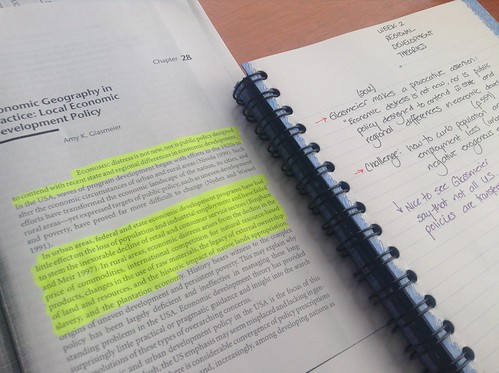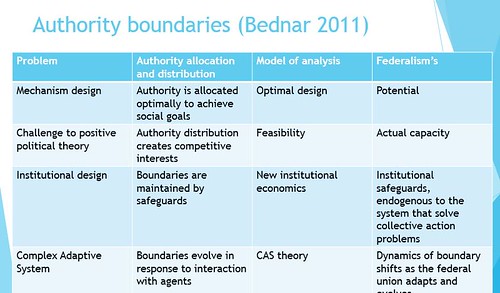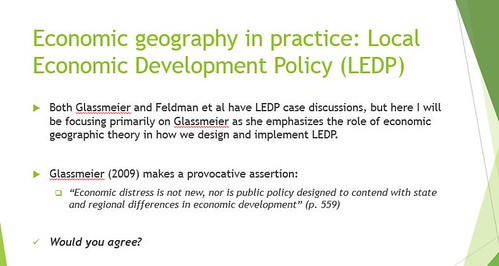As with everything I do, I’m pretty old-fashioned. I read (in advance), write my lectures by hand, and then I prepare the Power Point slides. While I did have a presentation coach (Janice Tomich, an excellent coach I can recommend who is based out of Vancouver), I recognize I’ve fallen back into some of my old habits (one of them, write lots of words in the slide deck). I do this particularly for theory-heavy lectures, which is the case in the first few weeks of both of my courses. Whenever I feel I’ve mastered the theory (usually after two or three iterations of this course), I start removing text and use only photographs to prompt and support my presentation.
The first thing I do is read twice each reading I assign. The first reading (usually a quick skim) lets me decide which theoretical points need to be highlighted. And then the second reading, I find those theoretical points and highlight them. I use different color highlighters and I write on the margins the main points I want to stress.
The second thing I do is write in my notebook the main points I want the lecture slide to contain. Here is usually where I decide how wordy the lecture slide needs to be. But I also connect other readings across with each other. I can’t do that while having only the PDFs open on my screen. I need to see them (physically), write Post-Its that connect each reading with each other, etc. Usually I make sure the text is well distributed so that it’s not text-heavy.
The third thing I do is simplify the slide deck as much as I can, usually with side-by-side comparisons and tables. For example, Jenna Bednar’s writing on federalism theory and the robust federation tends to be VERY theory heavy. So what I do to simplify the theoretical contributions she make is create a table that then I can explain in detail in front of the class (see below for examples of my slides, the first one is Regional Development on Amy Glassmeier’s view of economic geography and public policy, the second one is a summary of Jenna Bednar’s 2011 piece on the political science of federalism).
Overall, I am well aware that my process is time-consuming, if you teach more than what I teach and want to maintain a rigorous research program. Since I teach only 2 courses in the fall, I do schedule enough time to prepare my lectures. Bear in mind that these two courses, while I already have taught them, are entirely new preparations because I completely rewrote the syllabi to include more female and under-represented scholars’ writings. So, I am prepared to spend the extra amount of time that it would take me as opposed to say, Comparative Public Policy or Policy Analysis, both courses I’ve taught already quite a few times and I’m well prepared to teach in whichever variation I do. The courses I teach this fall, State and Local Government (third year) and Regional Development (fourth year) are interdisciplinary, area courses. So, preparing lecture slide decks takes way more time than you would think.
Overall, I like my process and I hope it’s of use to other professors, lecturers, etc.




0 Responses
Stay in touch with the conversation, subscribe to the RSS feed for comments on this post.